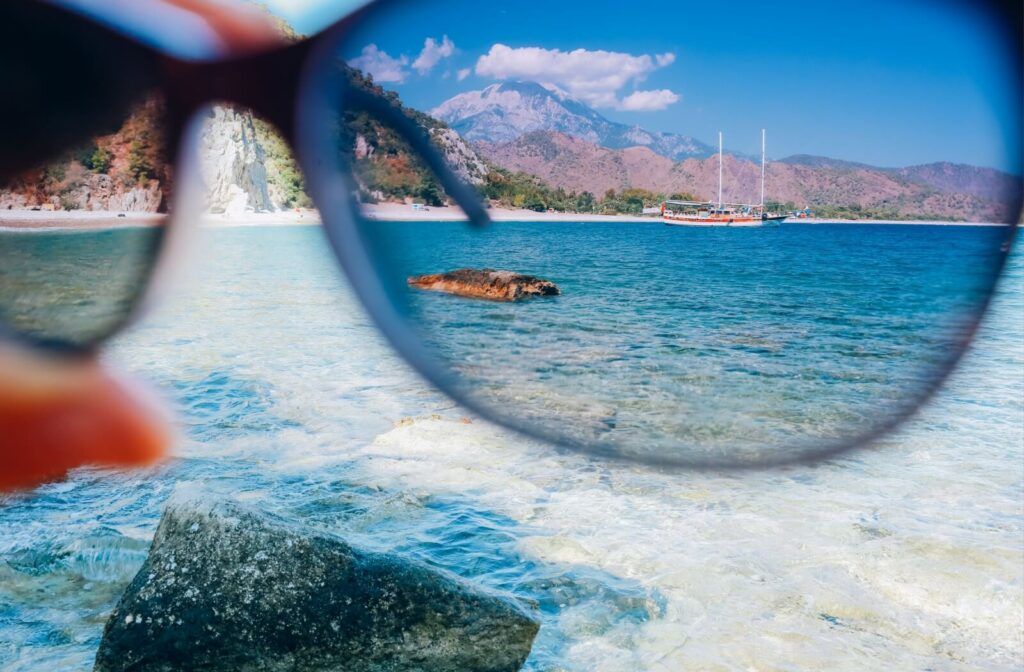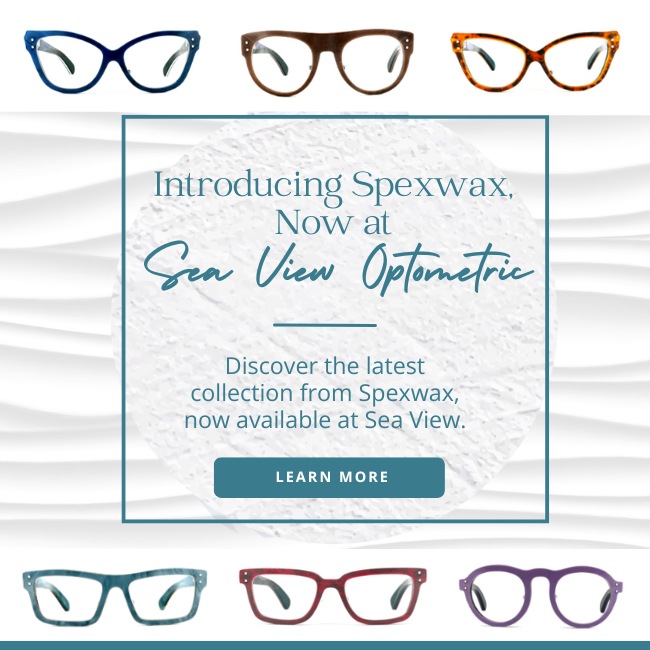Sunglasses protect your eyes from harmful UV rays while allowing you to enjoy clearer, more comfortable vision in bright conditions. But with so many options on the market, how do you know if your sunglasses are polarized and whether you even need polarized lenses?
You can perform a couple of easy tests with an LED screen or a reflective surface to tell if your sunglasses are polarized. But if you’re buying new sunglasses, the manufacturer’s tag typically specifies their UV-protection level and whether they’re polarized—no testing required.
What’s the Difference Between Polarized & Non-Polarized Sunglasses?
At first glance, polarized and non-polarized sunglasses may look identical, but they differ significantly in performance.
Non-Polarized Sunglasses
Regular sunglasses use tinted lenses to reduce overall brightness and shield your eyes from direct sunlight. This does help protect your eyes, but it doesn’t actively block intense glare that can strain your eyes.
Polarized Sunglasses
Polarized sunglasses feature a special chemical coating on the lenses that filters out horizontal light waves. These lenses block glare from reflective surfaces like water, snow, glass, or wet roads, allowing you to see better in bright, reflective environments.
Why Polarized Sunglasses Are Important for Your Eye Health
Prolonged exposure to UV rays can lead to serious eye problems over time, but polarized sunglasses with UV protection provide superior protection. Here’s a quick breakdown of the UV rays you’ll encounter:
- UV-A: These are the weakest type of UV rays, but don’t underestimate them. They pass straight through the ozone layer, making them a constant threat to your eyes and skin.
- UV-B: While the ozone layer absorbs some of these rays, a significant amount still reaches us. Extended exposure can cause significant damage to the eye, so it’s essential to protect yourself.
- UV-C: Although these are the most dangerous UV rays, we’ve got the atmosphere and ozone layer to thank for completely blocking them out before they hit the Earth.
What Can UV Rays Do to Your Eyes?
UV rays may be invisible, but their impact on your eyes is far from subtle. Extended exposure to unfiltered UV rays can cause:
- Cataracts: UV rays can accelerate the clouding of the eye’s lens, resulting in blurred or dim vision.
- Macular degeneration: Overexposure can damage your macula (part of your retina), which is responsible for sharp central vision.
- Photokeratitis: Also known as “sunburn of the eye,” this condition causes painful inflammation of the cornea, typically resulting from intense glare.
- Pterygium (surfer’s eye): This is a growth that develops on the surface of the eye and is often linked to overexposure to environmental factors like sunlight and wind.

The Benefits of Polarized Sunglasses
If you’re wondering if investing in polarized sunglasses is worth it, here are some of the major benefits:
- Glare reduction: Polarized lenses block intense glare, making it easier to see in bright environments like the beach, hiking trails, or while driving.
- Improved visual clarity: Colors appear truer and sharper when glare is eliminated. This is especially noticeable when looking at water or snowy landscapes.
- Reduced eye strain: Less squinting and eye fatigue make for a more comfortable experience, even on bright days.
- Enhanced safety: Whether you’re driving or participating in sporting activities, better visual clarity leads to safer decision-making.
When to Wear Polarized Sunglasses
Polarized sunglasses excel in settings with reflective surfaces. They’re ideal for:
- Driving: Avoid the blinding glare from the road, car hoods, and windshields.
- Water activities: Whether you’re fishing, kayaking, or simply lounging by the pool, polarized lenses help you see through the water’s surface.
- Winter sports: Snow reflects plenty of sunlight, and polarized sunglasses can reduce glare for better visibility during skiing or snowboarding. However, note that they can sometimes make it harder to see certain details, such as icy patches, which may be dangerous.
- Everyday outdoor activities: From running to hiking, these lenses can improve your overall visual experience in bright sunlight.
When Not to Wear Polarized Sunglasses
There are a handful of situations where non-polarized sunglasses or no lenses are a better option. For example:
- Screen viewing: Polarized lenses can sometimes distort digital screens, such as those on phones, GPS devices, or car display panels, making them harder to read.
- Piloting: Many airline pilots avoid polarized lenses because they can make it difficult to see certain instruments or through an aircraft windshield.
- Low sunlight conditions: At night, during fog, or in dimly lit areas, polarized sunglasses may block too much light, making it harder to see clearly.
How to Tell If Your Sunglasses Are Polarized
If you already own sunglasses and want to check if they’re polarized, here are 2 easy tests to try.
Reflective Surface Test
- Find a reflective surface, such as a shiny car hood or body of water.
- Put on your sunglasses and look at the glare.
- Tilt your head from side to side. If the glare significantly reduces or disappears at certain angles, your sunglasses are polarized.
LED Screen Test
- Hold your sunglasses in front of an LED screen (like your phone or laptop) at a 90-degree angle.
- Rotate them slowly. If they’re polarized, you’ll notice the screen appearing darker or even entirely black at certain angles.
Protect Your Eyes & Vision with Polarized Sunglasses
Your eyes deserve the same level of care as the rest of your body, and a good pair of polarized sunglasses can make a world of difference. Do yourself a favor and invest in polarized lenses that support both your vision and your comfort.
Stop by today and take a look at our curated selection of sunglasses at Sea View Optometry, perfect for sunny Southern California days. We can also discuss getting them fitted with your prescription lenses so you don’t have to choose between clear vision and keeping your eyes protected.



